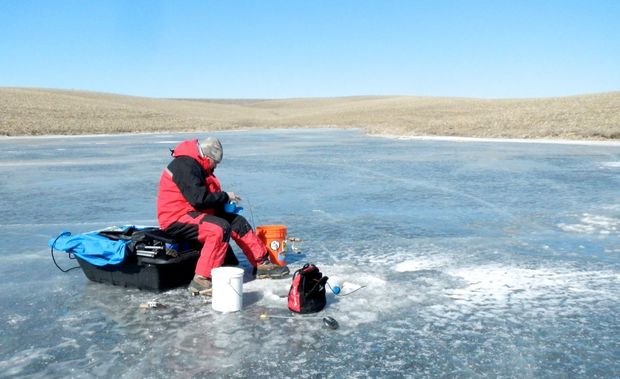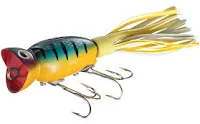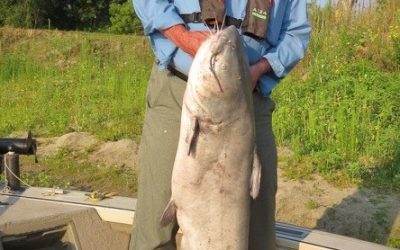Reprinted from the Sioux City Journal
With the current weather we are having, it would seem ice fishing will be a long time coming.
However, from now until the lakes and ponds freeze over with at least four inches of good ice there are a lot of things we can do to prepare for successful winter fishing forays.
It is a fact that angler success on the ice is greater per hour on ice than on open water. That’s probably why ice fishing is so popular. Significant advancements by manufacturers of all phases of ice fishing is another factor. Today, even in the coldest weather there is no reason you cannot fish in comfort.
Portable ice fishing shelters have come a long ways since the early days. Today’s rigs are easy to set up, easy to transport and are comfortable to fish from. Some also feature insulated fabric. Add a small propane heater and you can fish in shirtsleeves in the coldest weather.
Depth finders and underwater cameras can add a lot of fun to your on-the-ice adventures as well.
Each year I follow a kind of checklist of my gear before the ice forms. First, I check out my ice augers. I have both a manual unit and a gasoline powered one. Early on I’ll probably use the manual, and later when the ice is thicker I’ll opt for the power auger.
On the manual auger, I check the blades for sharpness. Trying to dig a hole with a dull auger is no fun. Next, I’ll check the blade of my power auger. If they are dull they will be replaced. I’ll fill my portable gas can with fresh gas mixed with the right amount of oil. Dump last year’s gas from the auger and fill up with fresh. Check the spark plug and replace if necessary. Then start the auger. It should start easily and run smoothly. If not, the carburetor is probably the problem. Take it to a small engine repairman.
The ice fishing shelter is next. I set it up and look for things that need fixing. I’ll start my propane heater and let it run for a while making sure it is operating correctly.
I try to travel light when I’m ice fishing. I use a five-gallon plastic bucket to carry my rods and gear. I have four small PVC pipes pop riveted both outside and inside of the pail into which I put the butts of my rods. I usually carry three rods. One is an ultalight ice rod with two-pound test line for panfish. Another is a light rod spooled with four-pound test line for panfish. The third is generally a heavier rod spooled with six-pound line for walleyes or bass.
I begin each ice season with fresh line. These light mono lines are delicate, and using fresh line gives me a peace of mind that if I break off a fish it is probably my fault and not because of line that has gone bad.
Next, I check my ice bucket. Make sure the cleats are in there. Unless there is a lot of snow on the ice you will need cleats unless you enjoy falling on your face. Ice picks are also carried in the bucket and transferred to my pockets before I go on the ice.
I carry two small, plastic boxes, one larger than the other. In the smaller box I keep my panfish lures such as tear drops, spiders and spoons. In the larger box are larger lure and spoons for walleye and bass. I also carry my slip bobbers in there.
My tip ups are also inspected to make sure they are in working order. For northern pike, my leaders are 20-pound test fluorocarbon about 30 inches long. I don’t use a wire leader because I feel I get more hook ups without one. Very seldom will a winter pike bite through 20-pound fluoro. I always check for rough spots after each catch and retie if I find any. Each year I start out with fresh fluoro leaders.
I have a line clipper and large hemostat for removing hooks from fish on a strong cord attached to the handle of the bucket. Also on the bucket’s wire handle are a few “bombers” for finding depths of water.
Early on I carry a nylon rope about 50 feet long with a small weight on one end. The rope can be thrown to someone who has fallen through the ice.
All of this is gone through and checked and cleaned if need be.
Next, I inspect my Vexilar depth finder. I clean it up, charge the battery and make sure it runs.
My cold weather gear consists of bibs and parka and are of the flotation variety for safety. I make sure they are clean, pockets emptied, patched up if need be. I have a variety of gloves and headgear and each are kept in plastic boxes in my closet for outdoor gear.
If you accomplish all these chores now, you can sit back and wait for the ice fishing season to begin, knowing that you are ready. And knowing you are ready is a good feeling.
More outdoor information is found at http://siouxcityjournal.com/sports/recreation/outdoors/





0 Comments